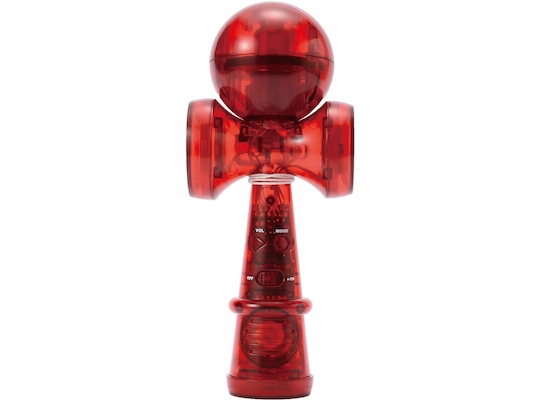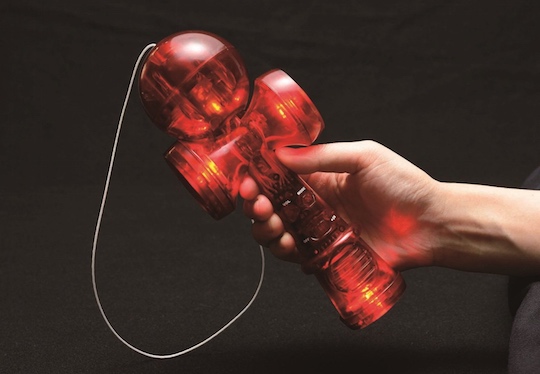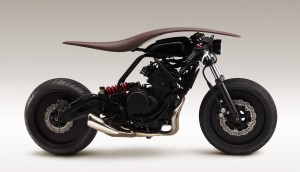Kendama have made a big comeback. The traditional cup-and-ball Japanese toy has been gaining in popularity in foreign countries for a little while now and in Japan too, the Japan Kendama Association is determined to milk this new-found following.
And so it is has helped make this Musical Kendama by DJ Koo, which combines the functions of the kendama with a musical beatbox.
DJ Koo might be a little long in the tooth but he’s a bit of a veteran figure in Japan. The Japan Kendama Association’s gamble might seem strange from overseas: if they want to make the kendama look cool, why did they use someone from a previous generation? That’s not ageist — just commonsense.
Well, frankly it doesn’t matter which DJ Koo first started spinning his tunes. The Musical Kendama is awesome.
This kendama lights up when you play it: every time you catch the ball on one of the cups, there is a sound. You can hear DJ Koo counting how many catches you have achieved, or there are record scratching sound effects or remixes of Koo’s famous tracks.
Other modes include dub and techno.
Playing a kendama is so simple anyone can enjoy it, just like the best of toys. However, it also offers a lot for players who want to build up their skills. The Japan Kendama Association administers 10 kyu rankings depending on your ability, and says there are 101 different tricks you can do with the toy.
All this encourages people with nifty hands. See the videos of overseas kendama aces if you really want to be impressed.
And it’s not just Japanophiles or hipsters who are getting their kendama groove on. It’s regular school kids too.
CBS News 8 recently reported that there is a “kendama craze sweeping the country”, while even Singapore is experiencing a mini boom. “Kendamas are the latest schoolyard craze,” boldly declared The Sacremento Bee in 2013. It quotes a local store that has seen the demand for kendama swell since the 2012 holiday season. It was selling 200 kendamas a week at the time the article was written.
In 2014 The Japan Times also reported on the new popularity of kendama at home and abroad.
“Definitely, people who had never been associated with kendama, especially young people (in their 20s and 30s), have become hooked for a year or two, with fans forming kendama-playing groups across the nation,” says Tamotsu Kubota, head of the Global Kendamas Network, or Gloken, which promotes the game.
Kubota says kendama used to be enjoyed mainly by Japanese children and grandparents, while people outside of those age groups considered it “old and uncool.”
“Kendama can be enjoyed by anybody, regardless of age, gender and nationality. But preconceived notions discouraged people from enjoying kendama,” he says.
Interestingly, the current boom was spawned by new kendama tricks developed overseas.
“Many people began to rediscover the appeal of kendama after watching videos uploaded online from the United States, which introduced impressive tricks,” notes Kubota, 32, who has been playing the game for about 14 years.
He says Americans who saw kendama toys in Japan took them home, practiced with them and eventually developed original tricks. This trend started around 2007, Kubota estimates.
This is called gyaku-yunyuu in Japanese — a “reverse import” — when something “native” gets taken up overseas, and then makes a comeback at home.
In particular, with kendama is was international players and their freestyle tricks that sparked a Japanese surge. Once the preserve of specialists, kendama is back in parks and streets, and is apparently a frequently sight in Harajuku.
There have since been many new types of kendama released in special designs. The first Kendama World Cup was also held in Japan in 2014.

























